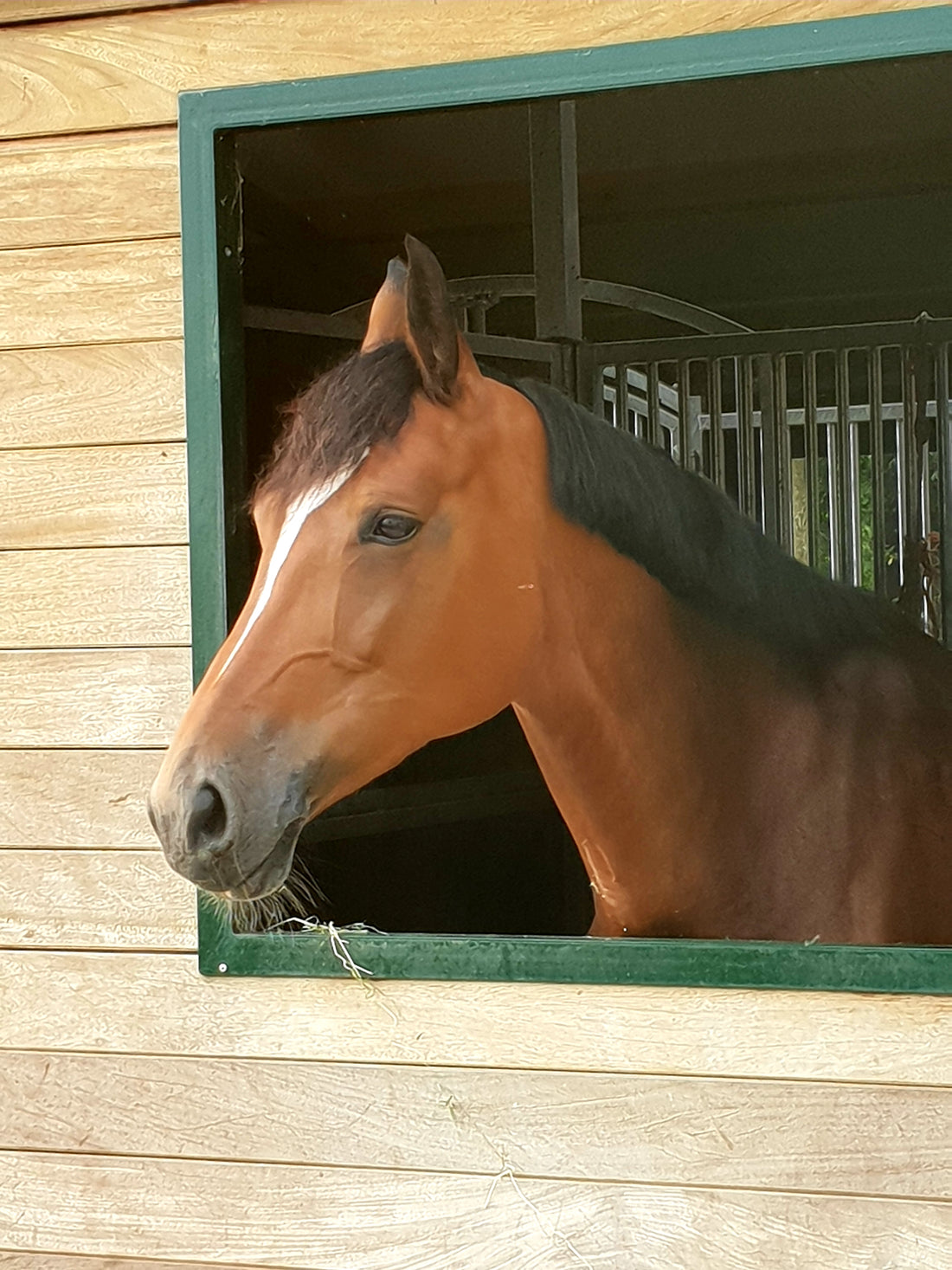Position is key for horse riders in any discipline. Without a secure leg, good posture and steady hands riders are often a hazard to a horses success.
Many riders don't want to hear how using their bodies effect their horse. They often just want to improve their horse but not themselves. The two, however, go hand in hand. If the riders position is not correct, the horse will not improve to the best of their ability.
A correct seat is all about balance and effective aids and neither of these two elements will come if your posture and position are incorrect.
To allow you to follow and feel the motion of your horse when riding, the best place for you to be is in the deepest part of your saddle. You'll find this spot directly behind the pommel. To find the ideal stirrup length for you, simply remove your feet out of the stirrups and let your legs hang by the side of your horse. Make your legs as long as they can comfortably be. Once your knees drop down you'll be able to feel your seat bones (not your buttocks) evenly in the saddle. Where the stirrups hit your anklebone is the correct length for you to begin with. At this length you'll be able to comfortably keep weight in your heels.
If your stirrups are to long you'll find you are constantly reaching for them which will upset your balance in the saddle. If your stirrups are to short, your upper body will be thrown to far forward as your legs fall to far behind the girth to compensate your balance.
A very common mistake that is seen with dressage riders today is stirrups that are far to long. The rider is left constantly reaching for their stirrups and not able to keep their heels down, in turn upsetting their balance and therefore their horse. If you are a short rider it does not mean you need to have stirrups that are to long for you. Reaching for your stirrups is not a good thing!
The stirrups belong on the ball of your foot, no further and no less. If you ride with only your toe in the stirrup you will find yourself forever losing your stirrup. Riding with your foot to far into the stirrup is dangerous and does not allow the flexibility you require in your ankle. You should be able to comfortably let your heels sink. Don't force them down as this will make your leg and ankle inflexible and stiff. You must sit over your legs, not behind them. Your toes should point forwards, not inwards or outwards (unless required to give a more clear instruction).
Now with your stirrups the correct length, the stirrup on the ball of your foot and your toes pointing straight you'll be able to wrap your legs around your horse, offering a secure lower leg position without constantly "nagging" at your horses sides.
Upper body position is just as crucial as leg position. The best saying to keep in your head when in the saddle is "think tall". When you think tall you'll be more likely to keep your upper body stretching upwards in the saddle. A common mistake made by riders and often their instructors is to tell the rider to sit back. Going behind the vertical is a no go in just about all aspects of riding. Don't think of sitting back, think of "growing" in the saddle. That way your likely to keep a centered position rather then falling in front or hevan forbid, behind the vertical. If you suffer from stiffness in your back, push your tummy slightly forward which will concave your back slightly. This will soften your back muscles to allow you to improve your position. Shoulders, elbows and wrists must remain supple and elastic to allow you to follow your horses movement. If your stiff in any of these places chances are your to hard on your horses mouth and not following their movement. You should be able to create one line from your elbows to the horses mouth so your arm acts as an extension of the rein. A broken line commonly occurs when your hands are to heavy or your shoulders and back become rounded. To fix this "think tall".
For correct rein length your elbows should sit just in front of your hip bones. Your hands should be over, and just in front of the horses withers. To check if your hands are two far apart or to close together, simply point your thumbs inwards towards each other. They should just be able to touch.
Your head should always be up. Far to often we see riders looking down at their horses. You need to be able to feel where your horse is, not look down at their head an neck. Think eyes up, eyes up, eyes up and you will automatically begin to lift your chin. Your head is the heaviest part of your body so of course once you drop your chin it's going to greatly influence your balance. By dropping your chin down, your center of gravity is automatically shifted forward, in turn causing your back to roach which will drop your horse on the forehand, all from not having your chin up! It's the smallest details that cause the greatest problems for riders of all levels.
Don't forget to breath! By holding your breath your body will become stiff, which will be directly transferred to your horse, causing them to stiffen through their body. And of course, enjoy yourself when riding, after all we do it for the fun and enjoyment of time spent with our horses.
By establishing a secure riding position you'll be not only improving yourself but your horse will follow your lead and you'll see improvements almost immediately.
References:
- Riding & Jumping Clinic - Anne Kursinski
- Because every round counts - George H. Morris
- 100 Ways to improve your horses schooling - Susan McBane
- The complete guide to hunter seat training, showing and judging on the flat and over fences - Anna Jane White-Mullen




